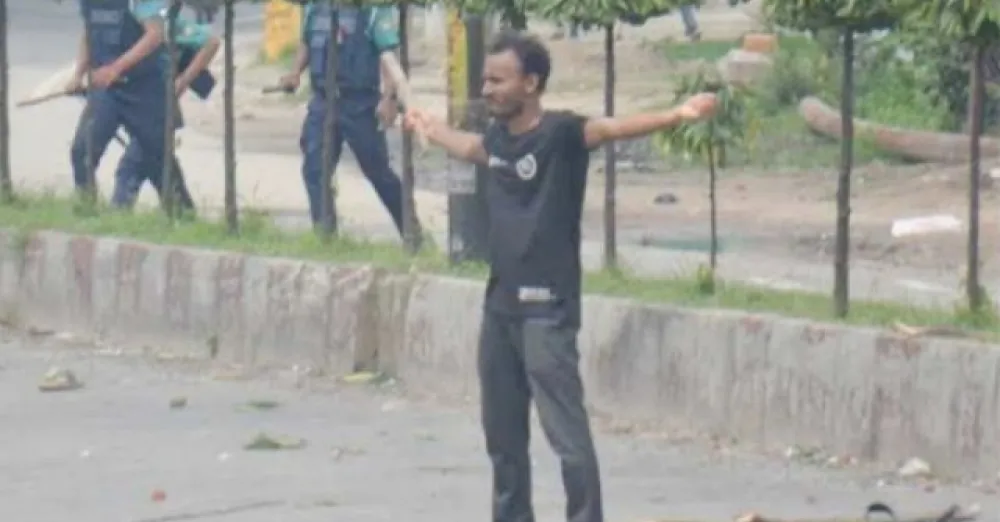
Two new NCTB textbooks for classes nine and ten feature two different dates of the killing of Abu Sayed, the student leader in Rangpur whose death led to the July mass uprising spreading like wildfire across the country.
This apparent error has caused confusion among many.
Abu Sayed, a student leader of Begum Rokeya University in Rangpur, was shot dead at close range by police on July 16 while he stood with his arms outstretched in defiance against police brutality.
The pictures of his death became an iconic image of defiance of the July uprising, drawing people from all corners of the country onto the streets.
The new English for Today textbook for students of classes nine and ten, published by the National Curriculum and Textbook Board (NCTB), has a section on Abu Sayed.
A write up titled "Graffiti" says that on July 17, 2024, Abu Sayeed, an unarmed organiser of the students' movement for quota reform in Rangpur, was shot and killed by police as he stood with his arms stretched out, leaving his mother, Monowara Begum, shell-shocked and crying, "My son only wanted a job; if you don't want to give him a job, then don't but why did you kill him?"
Meanwhile, a write up titled "Amader Natun Gourobhgatha" in the Bangla Shahitya textbook for class nine and ten students read that the movement received its most iconic and defining image on July 16, when Abu Sayeed from Rangpur stood steadfastly and advanced in the face of police gunfire.
A teacher of government secondary school in Mirpur said that this is a "callous mistake", and everyone is aware when Abu Sayeed was killed.
"I think there is no coordination among the textbook writers," the teacher said.
Contacted, NCTB Chairman Professor AKM Reazul Hassan said that they will look into the matter and will fix the confusion.
Source: the daily star
